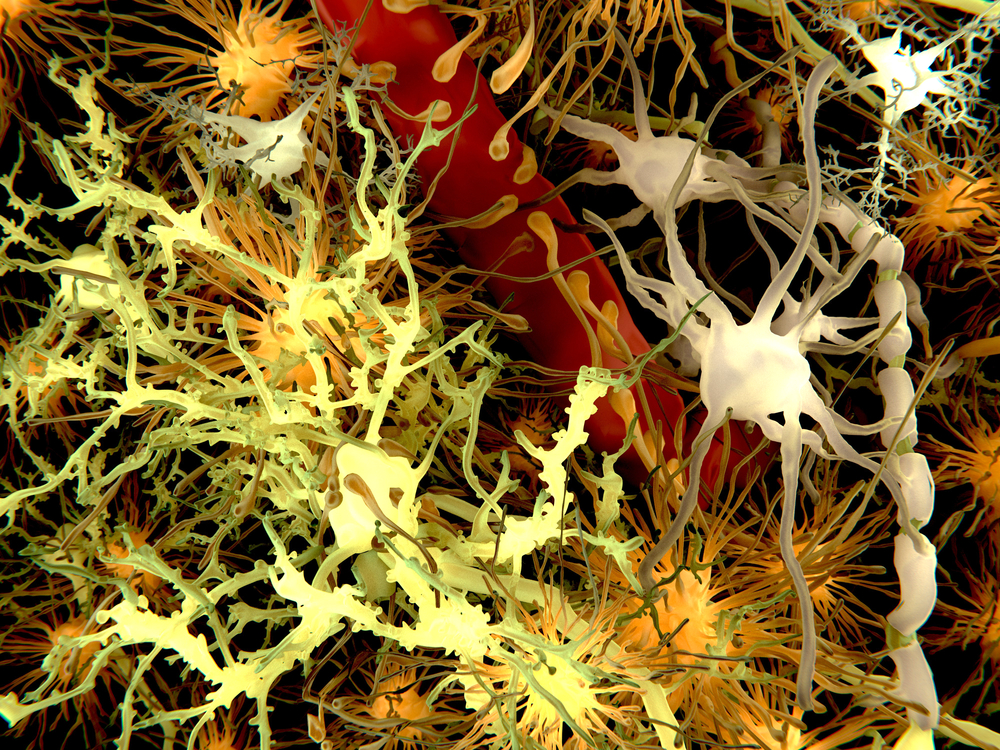MMP-9 Protein a Possible Marker of PML in Tysabri-treated RRMS Patients, Study Suggests
Written by |

A protein called MMP-9 could be a predictive marker of progressive multifocal leukoencephalopathy development in patients with relapsing-remitting multiple sclerosis (RRMS) who are being treated with Tysabri (natalizumab), a study suggests.
The study, “Dynamic changes of MMP-9 plasma levels correlate with JCV reactivation and immune activation in natalizumab-treated multiple sclerosis patients,” was published in the journal Nature Scientific Reports.
Brain inflammation in multiple sclerosis patients occurs when immune cells breach the blood-brain barrier. This layer of cells protect the brain and its supporting fluids, such as cerebral spinal fluid (CSF), from dangerous agents circulating in blood.
How easily immune cells can break through the blood-brain barrier depends on its porousness. For instance, it is known that decreasing the activity of matrix metalloproteinases (MMP) increases the protective layer’s permeability.
Matrix metalloproteinases are a family of proteins responsible for the degradation of collagen and other proteins in the extracellular matrix, which provides structural and biochemical support to surrounding cells.
Connect with other people and share tips on how to manage MS in our forums!
One metalloproteinase, called MMP-9, has been extensively studied in multiple sclerosis. MMP-9 levels are elevated in the CSF of multiple sclerosis patients and considered a potential biomarker of disease activity and possible therapeutic target.
Tysabri (marketed by Biogen) is one of the most effective treatments for RRMS currently available. It works by blocking the entry of immune cells into the brain. Tysabri is known to decrease MMP-9 levels in the CSF and serum in RRMS patients.
However, Tysabri has been associated with an increased risk of developing progressive multifocal leukoencephalopathy (PML). This rare and often fatal viral disease, caused by the John Cunningham virus (JCV), is characterized by progressive damage and/or inflammation at multiple sites in the brain.
The reduced migration of immune cells across the blood-brain barrier induced by Tysabri is thought to be the cause of this increased PML risk. Whether MMP-9 is involved in this process has not been studied.
To look at this, a team led by researchers from Sapienza University and Aldo Moro University in Italy investigated MMP plasma levels following Tysabri treatment in the context of JCV. The team specifically looked at how levels of MMP-9 were linked to disease-related processes.
Samples from 34 RRMS patients being treated with Tysabri (intravenous dose of 300 mg every four weeks) were analyzed.
As expected, results showed that MMP-9 plasma levels stabilized within one year of Tysabri treatment (up to 12 Tysabri infusions), although they began to steadily rise afterward (between 12 and 24 infusions). These increased MMP-9 plasma levels were not associated with clinical relapses in RRMS patients.
“MMP-9 levels increased in plasma accordingly with [Tysabri] infusion number,” the researchers wrote.
In comparing JCV-positive and JCV-negative samples, the researchers observed an increase in MMP-9 plasma levels in JCV-positive samples. This result suggested that JCV circulation in peripheral blood could be implicated in the increase of MMP-9 levels.
Interestingly, increased MMP-9 plasma levels were found to be correlated with immune cell activation.
“Our findings suggest a potential pathogenic role of MMP-9 in the development of progressive multifocal leukoencephalopathy during [Tysabri] treatment, and its possible use as a marker of JCV reactivation,” the researchers wrote.
Future studies are nonetheless needed to confirm these findings in larger groups of RRMS patients.





